ADVERTISER DISCLOSURE: The Frugal Tourist is part of an affiliate sales network and receives compensation for sending traffic to partner sites, such as MileValue.com. This compensation may impact how and where links appear on this site. This site does not include all financial companies or all available financial offers. Terms apply to American Express benefits and offers. Enrollment may be required for select American Express benefits and offers. Visit americanexpress.com to learn more.
In this blog post, I will list the strategies I used to raise funds for my epic cruise to Antarctica.
Hey there, fellow frugal adventurers!
Have you ever dreamt of setting foot on Antarctica -home to stunning icy landscapes, fascinating wildlife, and experiences like no other – but found yourself wincing at the potential cost?
While it might seem like a far-off dream due to the perceived cost, an adventure to this bucket-list destination can be within reach even for frugal tourists.
I’m here to share all the secrets to turning that frosty dream into a budget-friendly reality.
From early bookings to clever financial tips, I’ve got your back.
This blog post aims to provide cost-effective suggestions to make your Antarctica cruise unforgettable without breaking the bank.
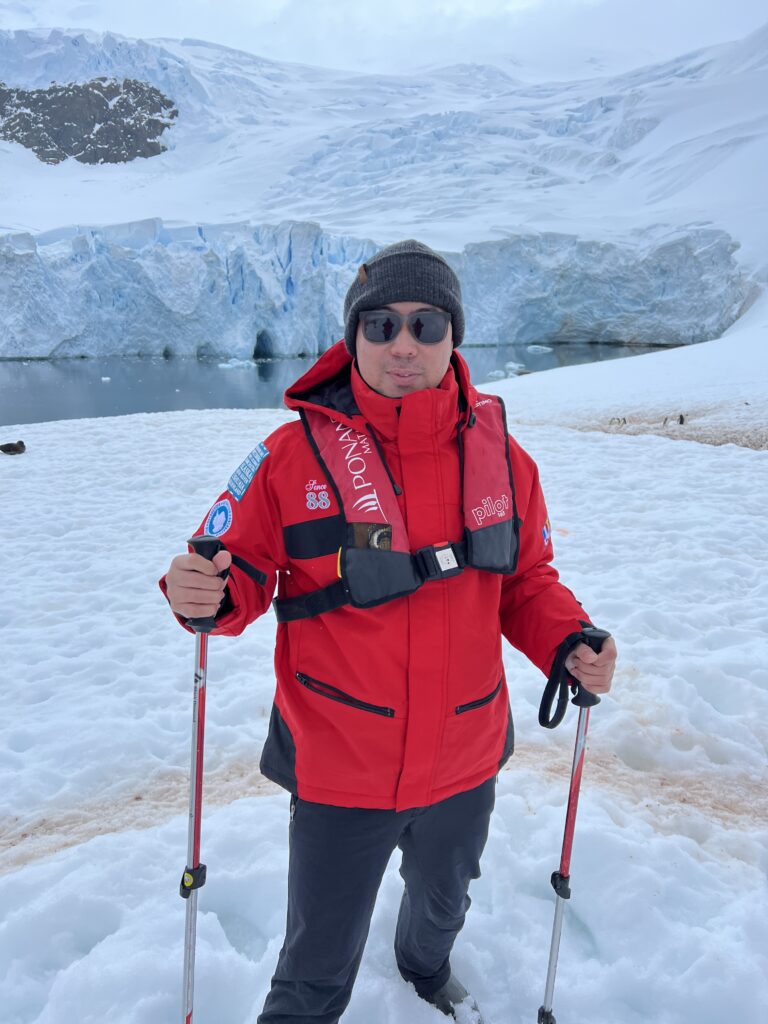
Budget-Friendly Tips for Antarctica
1. Plan and Book Ahead
Imagine witnessing the stunning Antarctic landscapes without burning a hole in your wallet.
Booking your Antarctic expedition at least a year in advance sounds a bit crazy. But it’s a game-changer.
Early birds snag the best deals, especially for cruises and tours to this remote paradise.
We lucked out and got 30% off by booking our Antarctic at least 12 months in advance.
Keep your eyes peeled for early-bird offers from different tour operators!
Pro-Tip: Cruise operators typically announce their tours approximately two years in advance.
2. Chase Those Shoulder Season Discounts
Traveling at the beginning or end of the Antarctic season can be a wallet-friendly strategy.
Early and late seasons offer more affordable cruise packages and present unique opportunities to witness nature’s wonders.
Experience pristine snowscapes during the early season and marvel at the majestic whale migrations during the late season.
Researching and choosing the right time to visit can result in significant savings.
Pro-Tip: The continent is only accessible to tourists between November and March, which is the Antarctic summer. The prime season for Antarctic cruises falls in December, making booking before or after this period a potential money-saver, slicing off a few hundred or even a thousand bucks from your expenses.
| Antarctic Tourist Season | Months |
|---|---|
| Early Season | November to early-December |
| High Season | Mid-December to January |
| Late Season | February to March |
3. Try Your Luck in Ushuaia, Argentina
Ah, Ushuaia!
This vibrant Argentinian city is the gateway to Antarctica and a gold mine for discounted cruises during the shoulder season.
Be vigilant and watch for sales and promotions offered by cruise companies departing from here.
Timing is key, so snatch those deals when you see a cruise that fits your schedule!
Pro-Tip: If you find yourself in Ushuaia without a cruise, head to the visitor center and find the “Antarctica” visa stamps that you can ink on your passport for free.
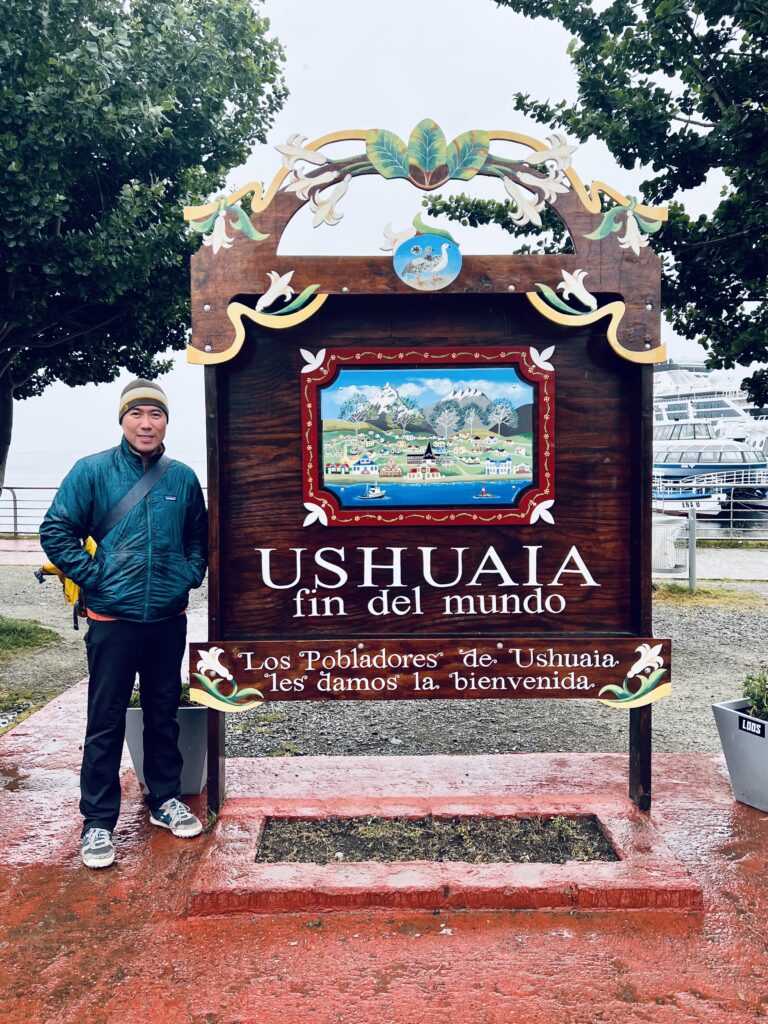
4. Opt for All-Inclusive Packages
While they might seem pricier upfront, all-inclusive packages often cover meals, activities, and even gear rentals.
Bundling these expenses upfront can be more cost-effective than paying for each separately.
Also, some of the most popular activities, such as kayaking, have limited spots.
Therefore, it is essential to book ahead of time to secure your spot and make the most out of your trip!
5. Look for Group Discounts
Traveling with friends or family?
Many tour operators offer group discounts, so rally your crew and score some savings together.
6. Pack Wisely
Don’t underestimate the power of a well-packed bag.
Bring layers and gear to keep you warm to avoid pricey purchases on the ship or at the destination.
Remember, it’s all about survival in style!
Optional: Skip the Souvenirs
Buying souvenirs is tempting, but consider the value of memories over material things.
Focus on experiences and take plenty of photos; they’re free and last a lifetime!
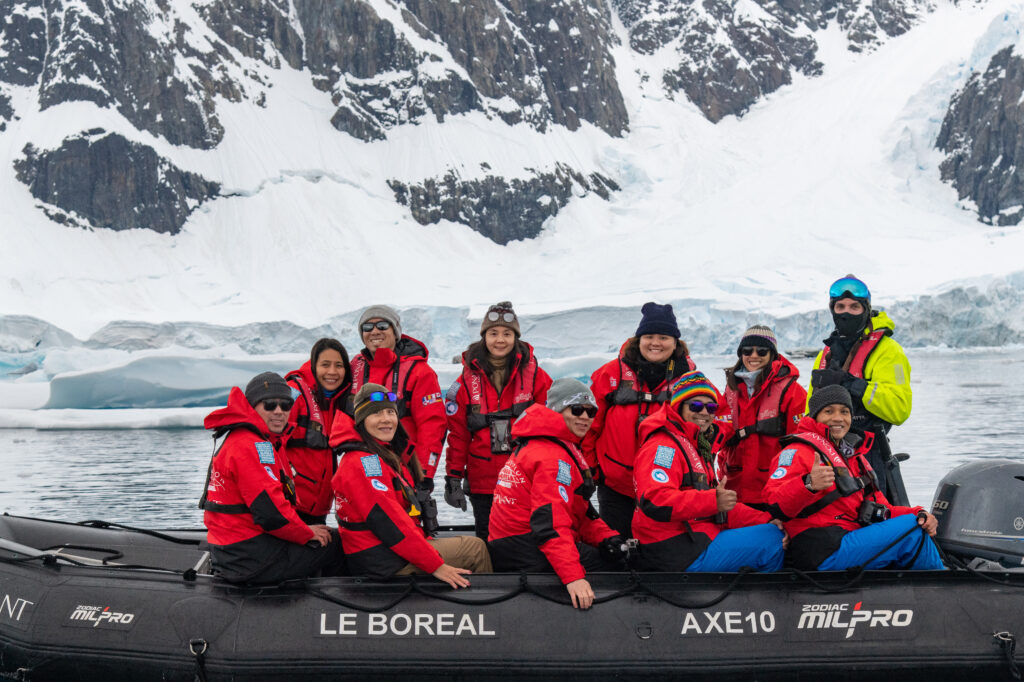
Saving For Antarctica: Tips on How to Raise Funds for Your Future Cruise
1. Cash Back Cards Are Your Best Friends
Ever considered how your credit cards can fund your Antarctica escapade?
Cashback credit cards are a popular financial tool that allows cardholders to earn a percentage of their spending in cash rewards.
Many cashback credit cards offer sign-up bonuses (SUBs) or introductory offers that increase the opportunities to accumulate money.
Therefore, these cash-back credit cards can be a great way to raise funds for traveling to Antarctica.
For example, some cards may offer a significant cash reward after spending a certain amount within the first few months of opening an account.
By strategically timing your purchases and taking advantage of these offers, you can increase your cashback earnings and potentially save hundreds or even thousands of dollars on your cruise.
In my case, I applied for credit cards that offered generous cashback bonuses after meeting certain requirements.
I accumulated a significant amount of cash back over time by using these credit cards for everyday purchases and paying off the balance in full each month.
This earned money was what I used towards my trip to Antarctica.
Some of the notable cashback credit cards that helped fund my Antarctica trip are listed in the table below.
| Credit Cards | Cash Back I Earned (Bonuses vary) | Annual Fee |
|---|---|---|
| Bank of America Customized Cash | $750 | No fee |
| Bank of America Unlimited Cash | $750 | No fee |
| US Bank Business Leverage | $750 | $0 first year, then $95 |
| US Bank Triple Cash Rewards | $500 | No fee |
| Capital One Spark Miles For Business | $500 | $0 first year, then $95 |
Pro-Tip: The credit cards I applied for were primarily business credit cards. Any side hustle or small business is eligible. If you currently don’t have a business, Section 16.1 of this article has a tip on what business to start to make you eligible for business credit cards.

2. Leverage Travel Rewards Credit Cards
In addition to cash-back credit cards, another valuable tool in my arsenal is utilizing travel rewards credit cards.
These travel rewards cards offer perks such as airline miles or hotel points for every dollar spent, which can then be redeemed for discounted flights or free accommodation.
Some travel rewards credit cards also offer additional benefits such as airport lounge access or free baggage allowance, making your journey to Antarctica more comfortable and cost-effective.
Before embarking on my Antarctica cruise, I strategically applied for specific travel credit cards.
These cards rewarded me with travel miles and points, which I subsequently utilized for flights, hotels, lounges, and to partially offset the cost of the cruise itself.
To earn the lucrative introductory sign-up bonuses (SUBs) offered by these new credit cards, I had to be mindful of two crucial aspects:
a. Meet the Credit Card Minimum Spend Requirement
To fulfill the minimum spend requirement for each card, we needed to use the credit card within a specific time frame – usually 90 days.
Fortunately, Ponant, the Antarctic cruise operator we had chosen, accepted payments via credit cards.
b. Pay Off The Credit Card Completely Before the Due Date
As frugal tourists, we know how important it is to pay off the credit card completely before the due date.
This will help you avoid late fees and make it easier for you to manage your finances more efficiently.
Plus, when you pay off the balance in full each month, you can enjoy all of the travel rewards and perks of using a credit card without worry.
The table below lists some of the credit cards I applied for before embarking on this cruise.
| Credit Card | Perk |
|---|---|
| Capital One Venture X Rewards Credit Card | $300 Travel Credit Lounge Access Transfers to Airline |
| Chase Sapphire Preferred® Card | $50 Hotel Credit Transfers to Airline & Hotel |
| The Ink Business Cash® Credit Card | This cash-back card earns travel points if you have a Chase premium card like the CSP. |
| The Ink Business Unlimited® Credit Card | This cash-back card earns travel points if you have a Chase premium card like the CSP. |
Join our Free Travel Miles and Points Facebook Group
If you want to connect with other travel miles and points enthusiasts, feel free to join our free Travel Miles & Points Facebook Group.

3. Capitalize on Bank Bonuses
Another budget-friendly strategy I used to save money for my Antarctica cruise was taking advantage of bank bonuses.
Many banks offer sign-up bonuses when you open a new account and meet specific requirements, such as maintaining a minimum balance or setting up direct deposit.
By strategically opening multiple accounts and meeting the requirements, I earned thousands of dollars in bonuses, which funded my trip to Antarctica.
The table below summarizes the bank bonuses I earned from new bank accounts that helped fund my Antarctic cruise.
| Bank | Bonus |
|---|---|
| Albert | $2000 |
| US Bank (Personal & Biz) | $750 |
| Bank of the West | $300 |
| Union Bank | $300 |
I am linking Doctor Of Credit’s awesome page below for the most current list of the best bank bonuses.
4. Save a Set Amount Each Month in a Travel Fund
Last but not least, one of the most crucial steps in planning for my Antarctica cruise was saving a set amount of my monthly salary in a dedicated travel fund.
By setting aside a specific amount of money from my monthly pay, I was able to save gradually and efficiently without feeling significant financial strain.
It also gave me a tangible goal to work towards and motivated me to cut back on unnecessary expenses.
In my case, I automatically send a set dollar amount every paycheck to my Charles Schwab Checking Account, which comes with a fee-free debit card that I can use at ATMs worldwide.

Advanced Tip: I Applied for the American Express Charles Schwab Platinum Credit Card
I have been fortunate to accumulate a substantial number of American Express Membership Rewards points through sign-up bonuses on business credit cards and shopping on Rakuten.
Recognizing the gradual devaluation of points over time, I chose to cash out my American Express Membership Rewards points.
To maximize the value of my points, I applied for the Charles Schwab Platinum Credit Card.
This ensured a guaranteed redemption value of 1.1 cents per Membership Rewards point.
For this Antarctica cruise, I cashed out a total of 300,000 American Express Membership Rewards points, which was equivalent to $3,300 that I deployed towards the cruise payment.

Summary of Tips
The table below summarizes the amount of money I raised from each strategy I outlined above:
| Strategy | Amount |
|---|---|
| Cashback Credit Cards | $3500+ |
| Travel Rewards Credit Cards | Points for flights & hotels |
| Bank Bonuses | $3350 |
| American Express Membership Rewards | $3300 |
| Automatic Savings ($250/month) | $3000 |
| Total | $13,000+ |
Choosing Your Ideal Antarctica Cruise Expedition
When selecting the perfect cruise ship for your Antarctica voyage, several factors can shape your experience.
When choosing the vessel that’ll carry you through this icy wonderland, let’s dive into what to consider.
1. Expedition Type:
Consider the expedition style that aligns with your preferences.
Are you seeking an active adventure with kayaking, camping, and hiking opportunities?
Or perhaps a more leisurely experience with a focus on wildlife observation?
Different cruises cater to varied interests, so pick one that matches your expedition style.
My friends and I preferred a comfortable but reasonably priced cruise during Christmas.
We picked Ponant because it offered a 30% discount during the time that matched our schedules.
2. Vessel Size:
The size of the ship affects the overall experience.
Larger vessels might offer more amenities, stability in rough waters, and sometimes more entertainment options.
On the other hand, smaller ships often allow for closer wildlife encounters and more flexibility in itinerary due to their ability to access narrower channels.
3. Itinerary and Activities:
Review the cruise itinerary and the activities offered.
Look for excursions like shore landings, Zodiac cruises, and lectures by expert naturalists.
Ensure the itinerary includes your desired destinations and activities, whether it’s visiting research stations, encountering penguin colonies, or witnessing colossal icebergs.
Our particular cruise offered kayaking, hiking, and zodiac rides but did not offer opportunities for camping or polar plunges.
If you’re seeking a specific Antarctic adventure, such as a polar plunge, ensure that the cruise you choose offers the experience you want.
4. Expedition Leaders and Guides:
Knowledgeable expedition leaders and guides can elevate your experience.
Check for cruises led by experienced naturalists, scientists, and historians who can provide in-depth knowledge about the region, wildlife, and environmental concerns.
5. Comfort and Amenities:
Evaluate the level of comfort and amenities offered on board.
While Antarctica cruises prioritize adventure, a comfortable cabin, good dining options, and cozy common areas can make a significant difference during downtime on the ship.
We loved Ponant’s French-inspired hospitality and world-class service.
6. Duration and Season:
Decide on the duration and the season that best suits your preferences.
Longer expeditions may delve deeper into the region, offering more comprehensive experiences.
Additionally, different seasons showcase diverse wildlife activities, such as the breeding seasons of penguins or the presence of whales.
7. Reputation and Reviews:
Research the cruise operator’s reputation and read reviews from previous travelers.
Online forums, travel websites, and testimonials can provide insights into the quality of service, expedition experiences, and overall satisfaction.
8. Environmental Commitment:
Consider cruises that prioritize sustainability and environmental responsibility.
Some operators actively contribute to conservation efforts or follow strict guidelines to minimize their environmental impact in this delicate ecosystem.
9. Budget:
Finally, align your chosen cruise with your budget.
Prices vary based on vessel size, itinerary, amenities, and included activities.
Remember, the value of the experience often outweighs the initial cost.
Although we usually prioritize frugality when traveling, we recognized the importance of not cutting corners on this particular trip.
We understood that opting for a budget Antarctic cruise would likely result in a subpar experience.
Being overly thrifty in our choice of cruise line could mean jeopardizing safety, enduring uncomfortable accommodations, and ultimately having a miserable time overall.
That was the reason why we chose Ponant.
Although not the most affordable option, it stood out for its reputation, positive reviews, and commitment to safety and the environment.
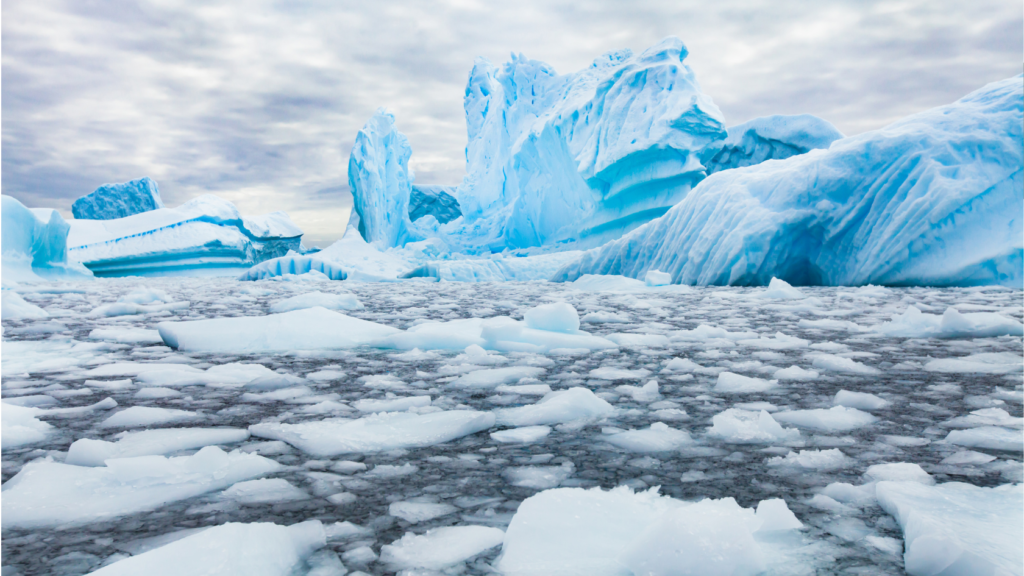
Antarctica Packing List
Before embarking on your journey to Antarctica, having a well-planned packing list is essential to ensure a comfortable and safe experience.
Let’s dive into everything you need to know about what to pack for your Antarctica expedition.
1. Warm Clothing:
Antarctica is known for its extremely cold weather, so make sure to pack plenty of warm clothing such as thermal underwear, fleece jackets, and down parkas.
2. Waterproof Outerwear:
With the possibility of encountering rain or snow, it’s important to bring a waterproof jacket and pants to keep you dry and warm.
Some cruise companies, such as Ponant, will provide waterproof parka jackets to protect their guests from the brutal wind and rain.
3. Hat, Scarf, and Gloves:
These items are essential for protecting your head, neck, and hands from the cold Antarctic winds.
4. Comfortable Shoes or Boots:
The terrain in Antarctica can be rough and icy, so sturdy footwear with good traction is important to prevent slipping.
5. Sunglasses and Sunscreen:
Make sure to protect your eyes and skin with sunglasses and sunscreen.
Despite being one of the coldest places on Earth, Antarctica also receives high levels of UV radiation due to its reflective ice surfaces.
6. Camera or Binoculars:
You’ll want to capture the stunning scenery of Antarctica, so don’t forget to bring a camera or binoculars for better views of wildlife.
I brought my Insta360 so I could capture some incredible footage of the Antarctic landscape from every angle.

7. Motion Sickness Medication:
The Drake Passage is notorious for rough seas, so if you’re prone to seasickness, be prepared with motion sickness medication.
My doctor recommended Scopolamine, a patch you put behind one of your ears to combat seasickness.
8. Power Adapters:
Most cruise ships in Antarctica use European-style power outlets (Type C), so make sure to bring an international adapter if needed for charging your electronic devices.

9. Swimsuit:
Some cruise ships offer polar plunges into the icy waters of Antarctica for brave-hearted travelers.
If you’re interested in this, don’t forget to pack a swimsuit!
10. Personal Toiletries:
Although most cruise ships provide basic toiletries like shampoo and soap, having your preferred products on hand is always good.
11. First Aid Kit:
It’s always better to be safe than sorry when traveling anywhere remote, like Antarctica.
Pack a small first aid kit with essentials like bandages, pain relievers, and any necessary prescription medication.
12. Extra Batteries or Power Bank:
With extreme cold temperatures, your electronic devices may drain their batteries faster than usual.
Bring extra batteries or a power bank to ensure you can capture all the amazing moments without worrying about running out of battery.
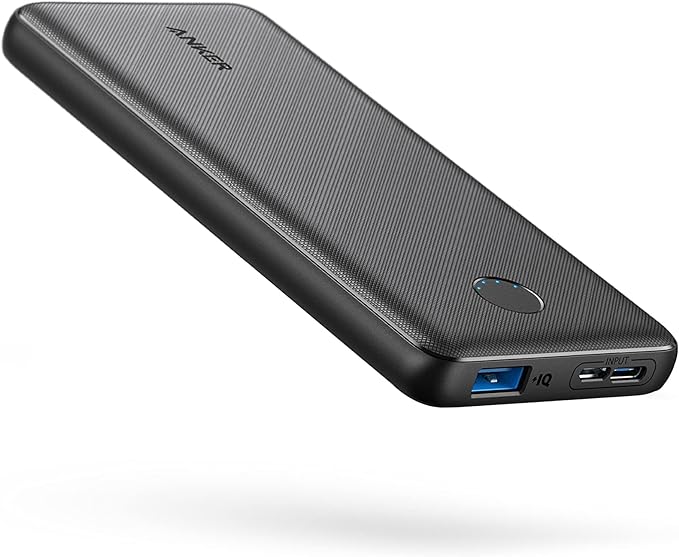
13. Waterproof Bag / Dry Bag:
Protect your electronic devices and other valuables from getting wet by bringing a waterproof bag or drybag for excursions.
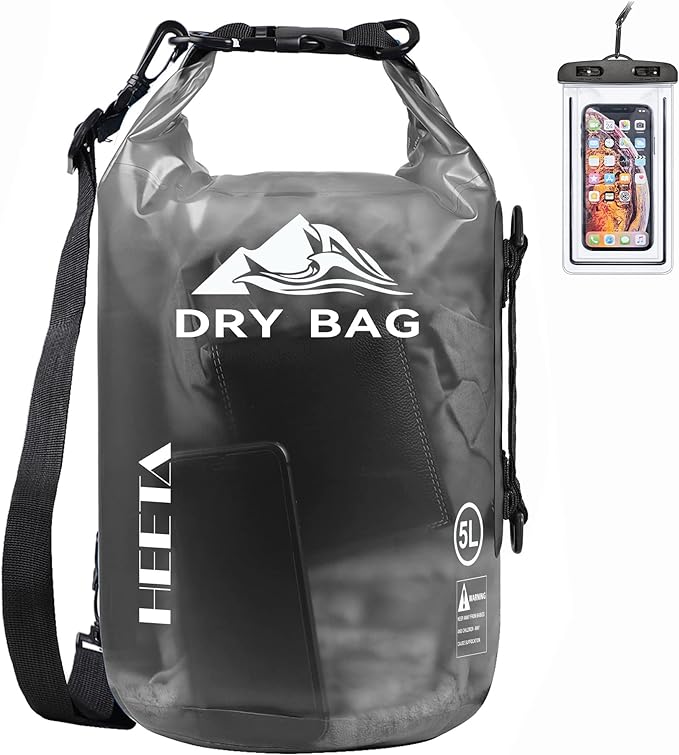
14. Insulated Water Bottle:
Staying hydrated is important in any climate, but even more so in the dry Antarctic air.
Pack an insulated water bottle to keep your drinks cold and prevent them from freezing.
15. Walking Sticks:
Most cruises include zodiac rides so tourists can land and walk on the continent.
Some of these landings involve hiking in the snow.
Therefore, make sure you pack those sturdy poles as you will need them.
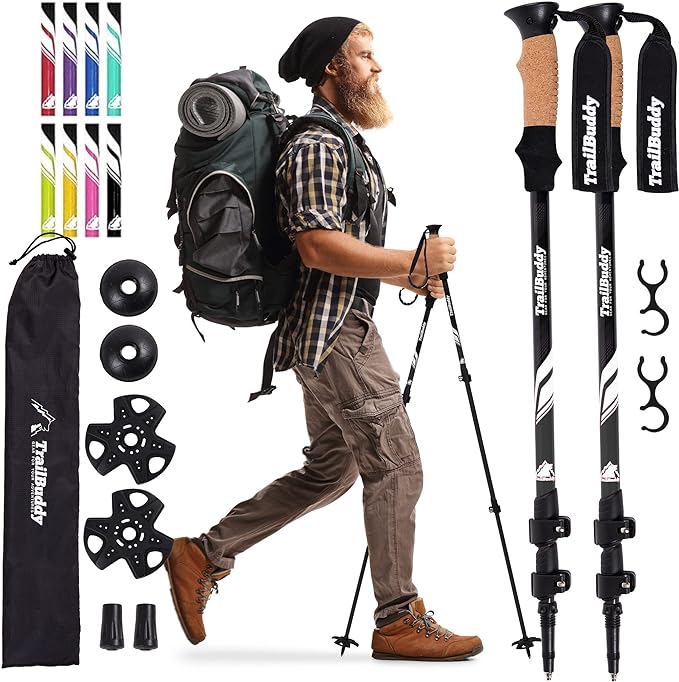
16. Cash in USD or Euros:
Although most cruise ships accept credit cards, having some cash on hand for tipping or purchasing items at local shops during shore excursions is always good.
17. No Foreign Transaction Fee Credit Card:
Traveling abroad can get expensive quickly.
If you are not mindful, you might inadvertently put your expenses on a credit card that charges foreign transaction fees.
That’s why frugal tourists need a no-foreign transaction fee credit card on their side.
A no-fee card will save you money every time you make purchases on this cruise.
Some notable credit cards that do not charge foreign transaction fees include the Chase Sapphire Preferred® Card and the Capital One Venture X Rewards Credit Card.
Instagram Reel: How to Survive the Drake Passage
Final Thoughts
Antarctica isn’t just a destination for the wealthy—it’s for the savvy, budget-conscious explorer too!
By embracing these money-saving tips, you can crack the code to explore this majestic white continent without blowing your budget.
With smart planning, timing, and a sprinkle of financial savvy, you’ll soon be cruising through icy waters, marveling at penguins, and making friends with glaciers—all without breaking the bank.
So start plotting, save, and prepare for an Antarctic adventure that’ll leave you with unforgettable memories and a happy wallet!
EDITORIAL DISCLOSURE – Opinions expressed here are the author’s alone, not those of any bank, credit card issuer, hotel, airline, or other entity. The content has not been reviewed, approved, or otherwise endorsed by any of the entities included within the post.



